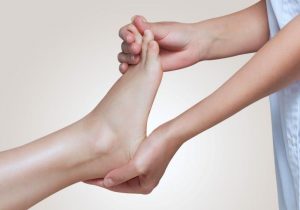Women are more likely to have children in the same month as their own birth, and now researchers think they might know why.
Births within immediate families tend to cluster within a given month, according to data on more than 10 million deliveries in France and Spain.
Siblings tend to share the same birth month as their mom and each other, and also tend to share the same birth month as their fathers, according to findings published Dec. 14 in the journal Population Studies.
“What could cause the higher probabilities of family members being born in the same season? The potential explanations seem to be both social and biological,” researcher Adela Recio Alcaide, an epidemiologist at the University of Alcala in Spain, said in a journal news release.
People with similar backgrounds seem to have children around the same time of the year, Alcaide and her colleagues noted, and also seem to be responding to different environmental factors that affect the biology of fertility.
For this study, researchers analyzed all births in Spain from 1980 to 1983 and from 2016 to 2019, as well as all births in France from 2000 to 2003 and 2010 to 2013.
Births in a particular country tend to follow a pattern that researchers call “birth seasonality,” where more babies are born at certain times of the year than others.
But when researchers grouped the data based on the birth month of the mothers, it didn’t follow the expected pattern, researchers said.
Instead, they found a spike in January births among moms born in January, a spike in February babies among moms born in February, and so on.
Overall, there were nearly 5% more births than would be expected where the mom and her baby’s birth month coincided – for both countries and for all time periods studied.
Other patterns also bucked seasonal expectations — 12% more shared birth months between siblings, nearly 5% more parents who shared the same birth month, and 2% more birth months common between children and fathers.
Researchers think this is because people of similar backgrounds tend to pair up, and then are more likely to give birth at certain times of the year.
For example, a woman in Spain with higher education is more likely to give birth in the spring than a woman without higher education, researchers said.
If she has a daughter, the girl is more likely to be born in the spring and also more likely to have higher education — and thus more likely to give birth in spring herself.
Mother and daughter also would be exposed to the same sort of biological factors that affect fertility, including availability of food, exposure to sunlight, temperature and humidity, the researchers noted.
“Biological factors that are known to affect birth seasonality… also depend on socio-demographic characteristics, since different social groups are exposed to these biological factors to varying degrees,” said co-researcher Dr. Luisa Borrell, a social epidemiologist at the City University of New York.
More information
The U.S. Centers for Disease Control and Prevention have more about birth patterns in the United States.
SOURCE: Taylor & Francis Group, news release, Dec. 14, 2023
Copyright © 2025 HealthDay. All rights reserved.





-300x169.jpg)










